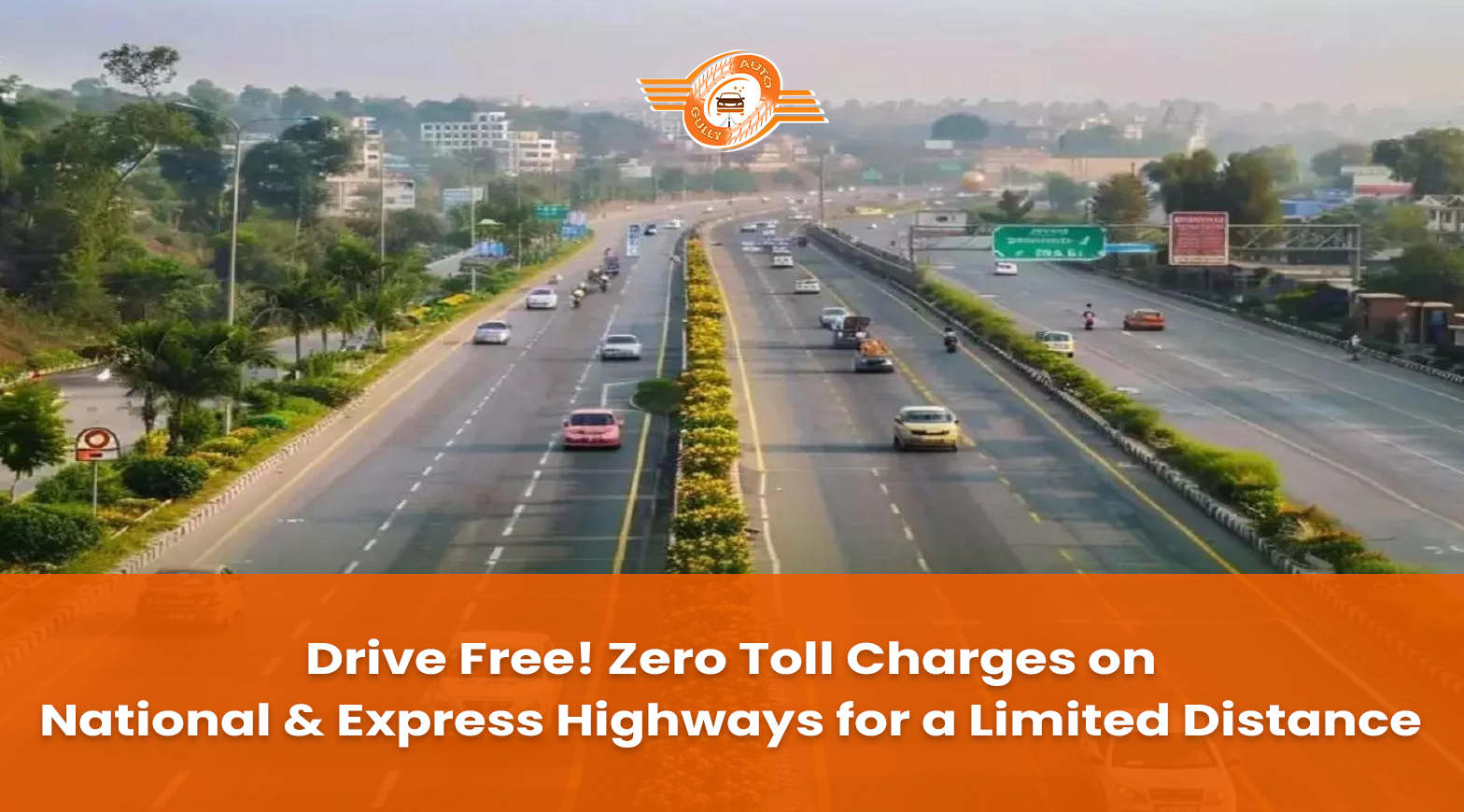There is this exciting scheme by the government through which zero toll charges on national and express highways for a limited distance are free to use for motorists. The new scheme is supposed to ease out financial burdens on commuters, encourage domestic travel, and promote trips across the country on roads. If you are planning a trip or often travel long distances, then this might be the ideal time for an open road trip. Here is all that you ought to know regarding this very exciting new development.

1. What Does “Zero Toll Charges” Mean?
Under this scheme, zero toll refers to the fact that for a part of your journey on national and express highways you pay no tolls. It is applicable both to private vehicles as well as commercial trucks, so leisure tourists as well as goods carriers benefit equally from state-to-state toll-section passages.
The concept is very simple: the government can provide a toll-free distance whereby the motorists enjoy part of their journey without pay. This may reduce travelling costs, especially for long distances travel.
2. Why implement this program?
There are various reasons the government has implemented the zero-toll program:
Boost Domestic Travel: International tourism has been vastly impacted by the pandemic; hence, domestic tourism is being boosted. Free tolls up to a distance motivate one to visit various parts of the country without incurring extra charges.
ease Financial Burden: In the case of daily commuters and transporters, the cost of tolls mounts up. Several kilometers of driving without the pain of paying tolls will save thousands of rupees; hence, this move is a great relief.
Reduce Congestion at Toll Plazas: Less number of toll charges on certain distances will work out to relieve congestion at the toll plazas. Thus, traveling and driving will be more effortless without hassle.

3. How Does the Toll-Free Distance Work?
The toll free distance will be pre-defined and marked on most of the national highways and express highways. For example, you could take 50 or 100 km without paying anything, and then normal toll rates will be levied. The scheme will be inducted throughout those key routes connecting most of the major cities and states.
It is worthy of note that such zero-toll policy would only be applied on particular portions of highways and only for a certain period. The government will also regularly review the policy so as to determine its effectiveness on traffic flow as well as on collection of revenue.
4. Highways Covered?
Though the exact quantum of highways in the plan is not yet final, it would encompass the majority of critical National Highways and most important expressways that would connect all areas of India. Some of the most emerging routes between the metro cities like Delhi, Mumbai, Bangalore, and Chennai should be included in this plan.
Even the expressways, which are seen as hotspots for heavy traffic, such as the Delhi-Mumbai Expressway and the Eastern Peripheral Expressway, will have sections that fall under the zero-tolling scheme. Noticeable signboards will be present on highways alerting people to stretches that remain toll-free so that the driver knows before reaching the booths.

5. For how long will the initiative last?
Currently, it is introduced as a short-term promotional scheme of a few months in duration. It is part of a more general policy to promote more short-term road usage perhaps ahead of the traditional peak-season travel at times of holidays and other vacations.
The government will likely increase or modify the scheme depending on how popular and effective it is in promoting traveling.
6. How to Take Full Advantage of This Plan
For an everyday traveler on the toll roads, this plan is a perfect money-saver when traveling. Here’s how you can take full advantage of it:
Plan your routes: Confirm which highways have the free toll charge and plan your route according to it. In the case of specific routes being free, you could save money by choosing them instead of others.
Keep Track of the Period: This is a limited-period scheme so ensure that you keep track of the duration of the scheme, lest you get caught off guard with the resumption of the toll charges.
Combine it with other discounts: In many highways, discounts on the tolls are already offered through FASTag systems or discounts on frequently moving the vehicle on the same route. So, add to that savings with the zero-toll initiative to enjoy the maximum benefit.

7. Benefit on Long Distance Travel
It would drastically cut the cost of traveling for passengers who travel over long distances, city commuters and cargo carriers. Toll free roads spanning the significant stretch will mean less stopping at toll booths and less time waiting in the queue while waiting to cross the busy traffic, thus leading to a faster journey that is cost-effective.
Another subgroup of individuals who would like the Highway Toll Ticket is families for vacations or road trips. That way, they would save on tolls so that they can put it in other things involved in their trip like lodging or what to do on the trip.
8. Conclusion
The initiative of zero toll along national and express highways for a limited distance would be a welcome relief to both commuters and long-distance travel. This scheme promises cheaper road travels, thereby boosting the tourism industry, cutting congestion at toll booths, and generally improving the experience of driving.
If you always wanted to take the road trip, maybe now is the time to take advantage of this initiative. If you are a daily commuter, a long-distance traveler, or simply an individual who wants to explore new places, then drive free and enjoy toll-free travel while it’s still in a limited distance.

